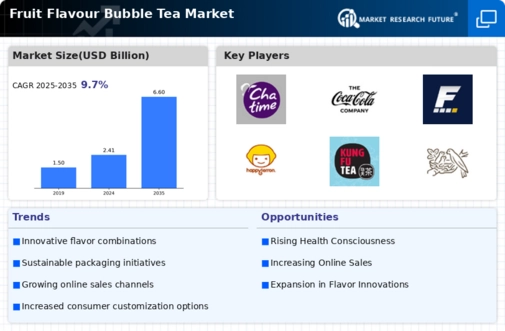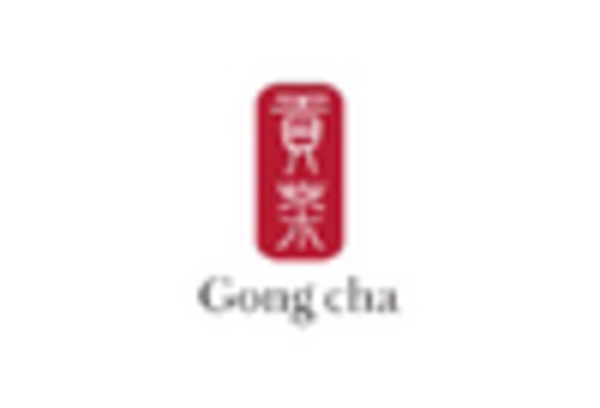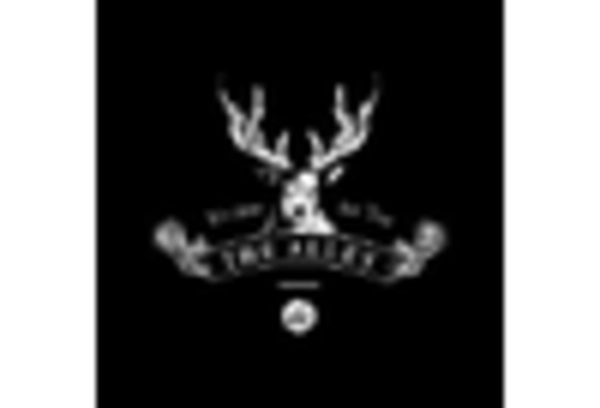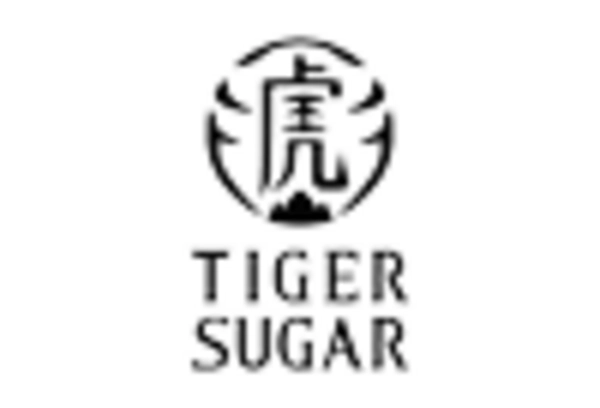Health and Wellness Trends
The Fruit Flavour Bubble Tea Market is increasingly influenced by health and wellness trends. As consumers become more health-conscious, there is a growing preference for beverages that incorporate natural ingredients and lower sugar content. Market data indicates that products marketed as organic or containing superfoods are gaining traction, appealing to a demographic that prioritizes health. In 2025, the demand for bubble tea made with fresh fruit and natural sweeteners is expected to rise, reflecting a shift towards healthier lifestyle choices. This trend not only enhances the appeal of bubble tea but also positions it as a viable alternative to traditional sugary beverages. Consequently, businesses that align their offerings with health trends are likely to capture a larger share of the Fruit Flavour Bubble Tea Market.
Expansion of Retail Outlets
The Fruit Flavour Bubble Tea Market benefits from the expansion of retail outlets, particularly in urban areas. The proliferation of bubble tea shops and cafes has made these beverages more accessible to consumers. Market data suggests that the number of bubble tea establishments has increased significantly, with many new entrants catering to diverse consumer preferences. This expansion is likely to continue, driven by the growing popularity of bubble tea among younger demographics. In 2025, the increased availability of fruit-flavored bubble tea in various retail formats, including food trucks and kiosks, is expected to enhance market penetration. This driver indicates that the physical presence of bubble tea outlets plays a pivotal role in attracting consumers and boosting sales within the Fruit Flavour Bubble Tea Market.
Rising Demand for Unique Flavors
The Fruit Flavour Bubble Tea Market experiences a notable surge in demand for unique and exotic flavors. Consumers increasingly seek novel taste experiences, leading to the introduction of unconventional fruit combinations. This trend is reflected in market data, indicating that flavor innovation contributes significantly to sales growth. In 2025, the market is projected to expand as brands experiment with tropical fruits and fusion flavors, appealing to adventurous consumers. The emphasis on unique flavors not only enhances customer satisfaction but also fosters brand loyalty, as consumers are drawn to establishments that offer distinctive options. This driver suggests that the ability to innovate and diversify flavor offerings is crucial for businesses aiming to thrive in the competitive landscape of the Fruit Flavour Bubble Tea Market.
Social Media Marketing Influence
The Fruit Flavour Bubble Tea Market is profoundly impacted by social media marketing strategies. Platforms such as Instagram and TikTok serve as powerful tools for brands to engage with consumers and showcase visually appealing products. The trend of sharing aesthetically pleasing bubble tea creations has led to increased consumer interest and foot traffic to retail locations. Market data reveals that brands leveraging social media effectively experience higher sales growth compared to those that do not. In 2025, the influence of social media on consumer purchasing decisions is expected to intensify, as visually-driven content continues to shape preferences. This driver suggests that businesses must prioritize social media engagement to remain competitive in the dynamic landscape of the Fruit Flavour Bubble Tea Market.
Cultural Fusion and Globalization
The Fruit Flavour Bubble Tea Market is shaped by cultural fusion and globalization, leading to the incorporation of diverse flavors and ingredients. As consumers become more exposed to international cuisines, there is a growing appetite for bubble tea that reflects various cultural influences. Market data indicates that fusion flavors, combining traditional fruit flavors with unique ingredients from different cultures, are gaining popularity. In 2025, the trend of cultural fusion is likely to drive innovation within the industry, as brands seek to cater to a more diverse consumer base. This driver highlights the importance of adaptability and creativity in product development, as businesses that embrace cultural diversity are poised to thrive in the evolving Fruit Flavour Bubble Tea Market.


















Leave a Comment